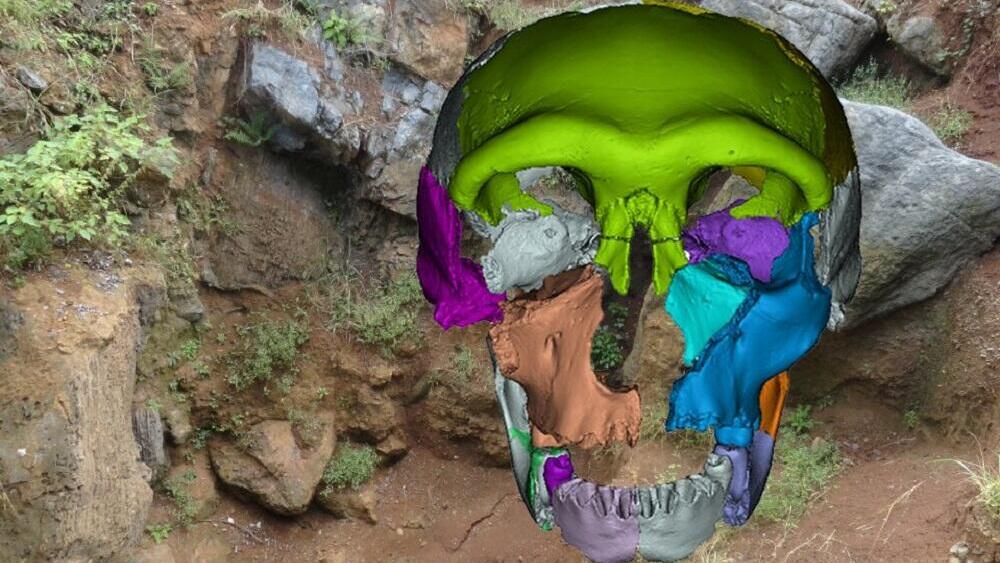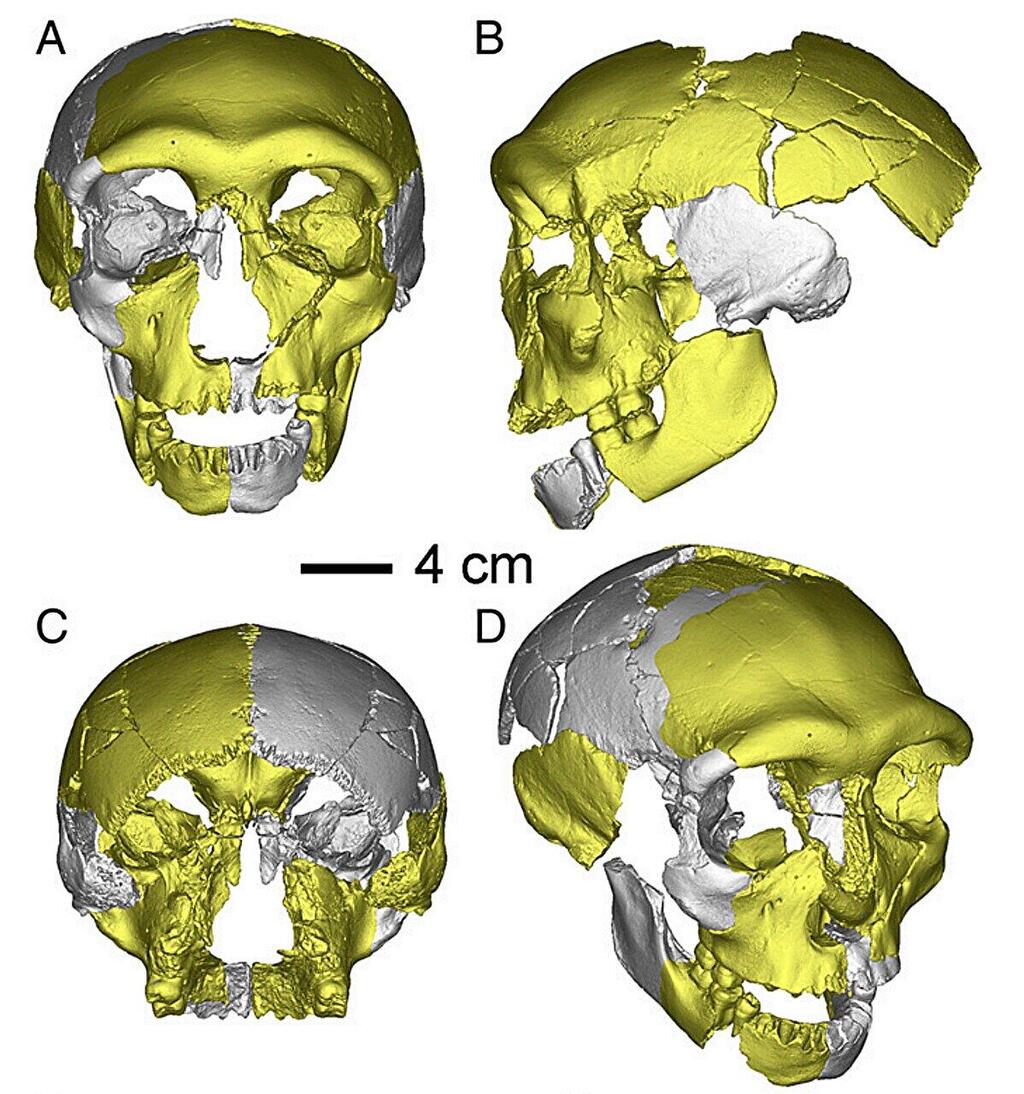An assembly of Paleontologists from the Chinese Academy of Sciences, Xi'an Jiaotong University, the University of York, the University of Chinese Academy of Sciences and the National Research Center on Human Evolution have uncovered fossil evidence of a previously unknown humanoid.
Read more:
Published in the peer-reviewed journal of Human Evolution, the study detailed how the researchers closely examined fossilized jawbone, partial skull and some leg bones of a hominin dated to 300,000 years ago.
2 View gallery


A virtual reconstruction of the bones collected on site
(Photo: WU Xiujie, Erik Trinkaus)
Said fossils were excavated in eastern China in the Hualongdong region. They were subjected to a thorough geometric and morphological examination, which discovered a curious detail about the jawbone, featuring a triangular lower edge and a bend previously unseen in any other hominid.
Researchers indicate the distinct characteristics of the jawbone share similarities with contemporary humans and hominids from the Late Pleistocene era. The lack of a chin, however, suggests ties to more ancient species.
Other traits align with Middle Pleistocene hominins, leading the team to deduce the specimen likely aligns most with the Homo erectus, an extinct species of archaic human from the Pleistocene, with its earliest occurrence about 2 million years ago. This combination of features points to a blend of modern human and early hominid attributes.
In East Asian hominids, this unique blend of features is unprecedented, hinting that traits seen in today's humans might have started to manifest roughly 300,000 years ago.
2 View gallery


A virtual reassembly of the skull
(Photo: Wu Liu et al. Proceedings of the National Academy of Sciences (2019). DOI: 10.1073/pnas.1902396116)
While a previous group pinpointed the skull as the oldest Middle Pleistocene human discovery in southeastern China, recent research underscores that its facial structure aligns more with today's humans than the attributes of the jawbone do.
In the process of trying to categorize the exact species, researchers have ruled out the Denisovans hominins, an extinct species or subspecies of archaic humans that ranged across Asia during the Lower and Middle Paleolithic ages.
Additionally, they've concluded that it is not Homo Erectus, leaving it more closely related to Homo Sapiens. (modern-day humans) If so, it's plausible that this species had evolutionary ties with Middle or Late Pleistocene hominins, resulting in overlapping traits.

